SURINAME
History

History
History
Pre-colonial period
Indian hunter-gatherers settled in the area of present-day Suriname around 10,000 BC, archaeological excavations show. Axes and arrowheads correspond to European finds from the Stone Age. About 3000 BC, cultivators settled near the fertile rivers and produced pottery. There are few written sources from the pre-colonial period of Suriname, but archaeological finds indicate that there were some kind of mounds inhabited surrounded by fields in the period until the first Europeans set foot on land.
Spaniards, English and Dutch
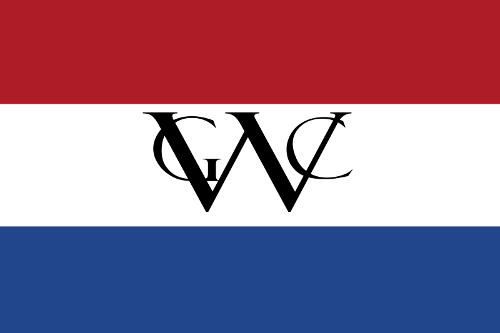 Flag of the West India Company, SurinamePhoto: LTB CC 4.0 International no changes made
Flag of the West India Company, SurinamePhoto: LTB CC 4.0 International no changes made
In 1593 Suriname was taken over by the Spaniards, but soon abandoned. The Dutch also founded a branch there, which, however, did not last either. After 1650, a group of English settlers from Barbados successfully settled on the Suriname River. In 1667 their colony had 175 plantations and more than 4000 settlers and slaves.
In 1667 the Zeelanders conquered Suriname under the leadership of Abraham Crijnssen and after the Peace of Breda they were able to keep Suriname in their possession. In 1682, the province of Zeeland transferred the colony to the West India Company (WIC), which founded a separate limited company. One third of the shares came into the hands of the WIC, one third of the city of Amsterdam and one third of the Van Aerssen van Sommelsdijk family.
Plantations, slavery and indentured servants
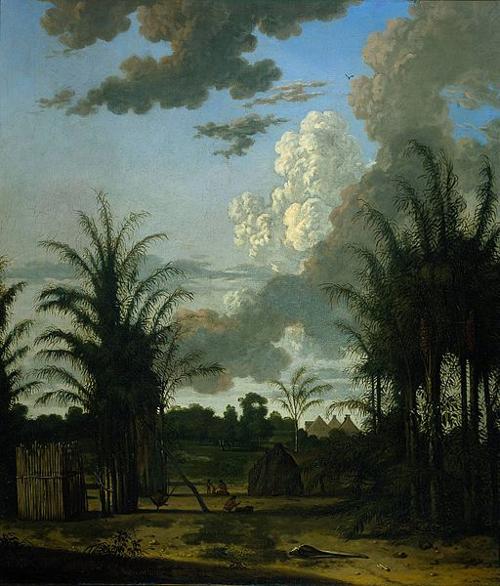 Plantation in SurinamePhoto: Public domain
Plantation in SurinamePhoto: Public domain
Cornelis van Aerssen became the first governor of Suriname. He was committed to increasing the number of plantations. By waging war against the Indians and the runaway slaves, he made Suriname attractive to European investors. All of Van Aerssen's successors continued this policy in favor of plantation agriculture.
The Surinamese coffee and sugar were sold on the Dutch market. Dutch investors invested more than 60 million in Suriname between 1751 and 1773. In 1773, a crisis on the Amsterdam stock exchange brought a sudden end to the capital supply to Suriname. Many planters had borrowed too much and could not meet the interest payments and repayments and were obliged to sell their plantations to the moneylenders in the Netherlands. This change was of little significance to the slaves. They were forced to make their labor available to the plantations. Their number was estimated at 50,000 around 1800. After the conquest of Suriname by the English in 1799, the supply of slaves from Africa was prohibited in 1806. As a result of this measure, the mortality surplus among slaves could no longer be compensated by new supplies. Because two-thirds of the supplied slaves were men, the number of slaves slowly decreased. Some of the slaves also ran away and these runaways formed separate communities, which the colonial government could not destroy and with which it concluded peace treaties to protect the plantations from further attacks. These former slaves were called Maroons.
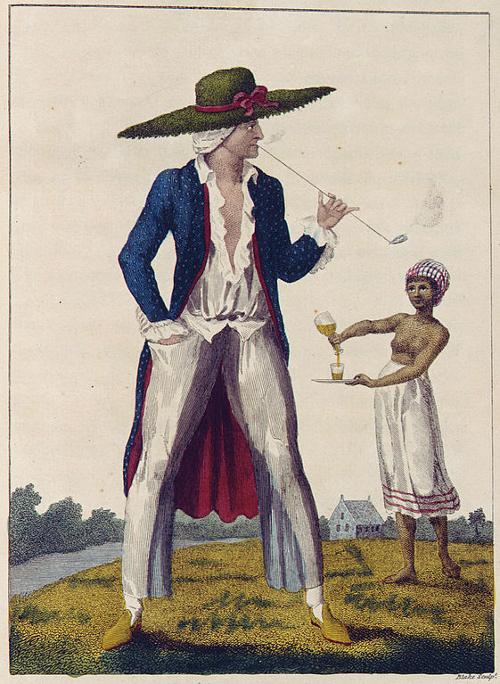 Plantation owner in Suriname with enslaved femalePhoto: Public domain
Plantation owner in Suriname with enslaved femalePhoto: Public domain
In 1863 slavery was abolished in Suriname and in 1873 the ex-plantation slaves were really free. In that year their obligation to enter into an annual employment contract with a plantation owner expired. Many plantations were merged to make up for the labor shortage. In 1862 Suriname had 216 plantations, in 1913 it was 79. The total sugar yield remained virtually constant over the centuries, although coffee, cocoa and cotton disappeared.
Although this form of agriculture became less and less economic, colonial policy continued to promote this sector. The government took more than 30,000 British Indians to Suriname and more than 33,000 Javanese, who had committed themselves to work on the plantations for a period of five years before being shipped, after which they were able to return home. In 1916 the importation of British Indians came to an end due to nationalist opposition in India to this form of labor migration. The supply from Java came to an end due to the decline of the plantations. Incidentally, about two-thirds of the Indian and Javanese indentured servants did not return home, but settled in the colony, after the colonial government began to promote the ownership of small plots for food farming after 1890.
There were few economic alternatives outside of plantation agriculture. The discovery of gold provided work for some of the former slaves, while the growth of the government apparatus also created a number of jobs. There was only limited industrial development in Suriname. Around 1970, 23% of the working population made a living in agriculture, 15% in industry and 40% in the service sector (government, crafts).
The social structure of Suriname was strongly influenced by the lack of contacts between the different population groups. The slave emancipation of 1863 meant that a large part of the population originally from Africa turned their backs on plantation farming and turned to work in forestry, mining and the service sector. Their place in agriculture was taken by the Hindus and the Javanese. At the top were the white plantation owners and the administrative officials from the Netherlands. The small Creole middle class felt connected with the white upper layer.
The social balance of power was reflected in the States of Suriname, which were established in 1866. The members of the States of Suriname were appointed by the governor until 1901, after which they were elected according to census electoral law. Universal suffrage was introduced in 1948.
From self-government to independence
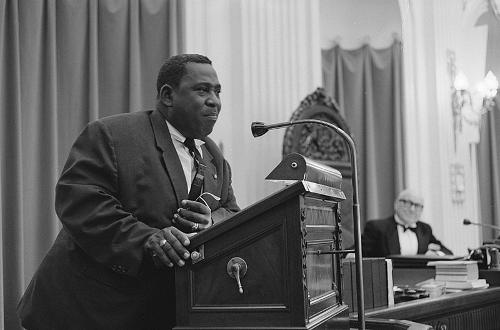 Pengel SurinamePhoto: Harry Pot in the public domain
Pengel SurinamePhoto: Harry Pot in the public domain
After the war, Suriname was granted a large degree of self-government. In the Statute for the Kingdom of the Netherlands (1954) the position of Suriname and the Netherlands Antilles was regulated. Since then, the political parties have sought a looser relationship with the Kingdom. Parts of the National Party of Suriname (NPS) and the Party Nationalist Republic (PNR), which mainly belonged to the Creole population group, strove for independence in the short term. The Hindustani Vatan Hitkari Party (VHP), led by Lachmon, still wanted a link with the Netherlands.
Under Prime Minister Pengel and his successor Jules Sedney, opposition to the bad socio-economic situation increased. For example, there were strikes at education (which led to the fall of Pengel) and at the Suriname Aluminum Company (Suralco), while a general strike took place in early 1973. In parliamentary elections in 1973, the National Party Combination (NPK) was victorious. Arron, chairman of the NPS and the NPK, formed a new government, which announced its intention to make the country independent before the end of 1975. In October 1975, a law amending the Kingdom Statute was passed in the Dutch Parliament. In Suriname, Prime Minister Arron and opposition leader Lachmon, who had hitherto strongly opposed independence, reached agreement on the Constitution, which was subsequently adopted.
Suriname's independence became a fact on November 25, 1975. Ferrier, until then governor, became the first president. Prime Minister Arron remained leader of an NPK cabinet. After the first parliamentary elections in independent Suriname in October 1977, which were won by the NPK, Arron again formed a government.
Coup
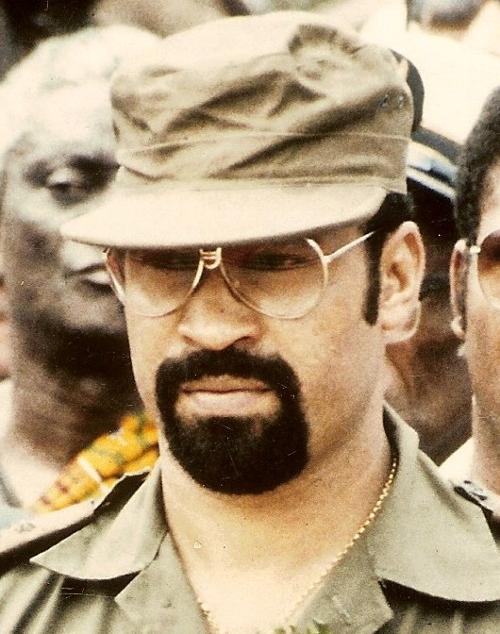 Desi Bouterse SurinamePhoto: We El CC 3.0 Unported no changes made
Desi Bouterse SurinamePhoto: We El CC 3.0 Unported no changes made
In February 1980, an old conflict between the government and professional soldiers over the establishment of a union broke out, which resulted in a military coup (25 February 1980). The civilian government disappeared and a number of the rebel soldiers, including Sital and Desi Bouterse, formed a National Military Council (NMR), which declared that they had taken power. They announced that they want to end corruption and implement important reforms. President Ferrier was initially prepared to more or less legalize the coup on the condition that civilian government would be established. It was formed and placed under the leadership of Chin A Sen, a prominent member of the PNR in mid-March. In mid-May, parliament passed an enabling law, which gave the government far-reaching powers and greatly diminished the role of parliament. In the following years Suriname had governments of different types. However, the soldiers under the leadership of Desi Bouterse ('Bevel') had the last word.
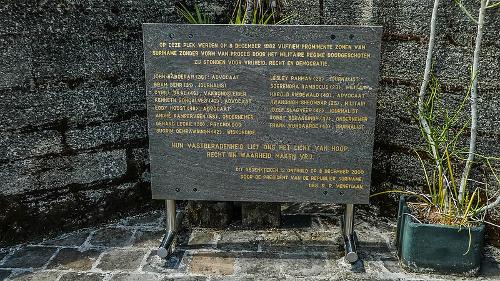 The memorial sign commemorating the December Murders in Suriname on December 8th, 1982Photo: JvL CC 2.0 Generic no changes made
The memorial sign commemorating the December Murders in Suriname on December 8th, 1982Photo: JvL CC 2.0 Generic no changes made
A low point was the December murders of 1982, in which 15 prominent opposition members were executed by the military. Due to the political lack of freedom, the ever worsening economic situation and the emergence of a guerrilla led by Ronnie Brunswijk in the interior, the popularity of Desi Bouterse declined.
1987-2000
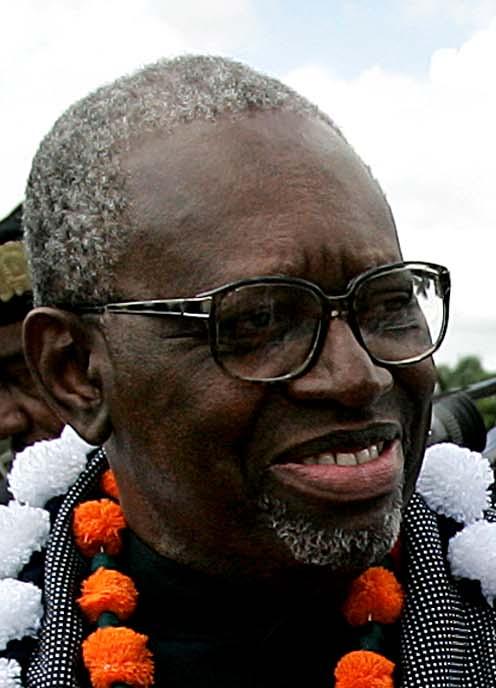 Ronald Venetiaan, SurinamePhoto: Ricardo Stuckert/PR Creative Commons Attribution 3.0 Brazil no changes made
Ronald Venetiaan, SurinamePhoto: Ricardo Stuckert/PR Creative Commons Attribution 3.0 Brazil no changes made
Ultimately, the military was forced to enter into consultations with the old political parties. This led to the referendum and the 1987 elections, which brought the old parties back into the cabinet. The president, R. Shankar, became the most important man in the country. Despite their severe defeat in the elections, the military retained great power behind the scenes.
From 1987 consultations with the Netherlands about resuming development aid started again. But in 1990, aid, which has now resumed, was suspended after another coup d'état by soldiers on Christmas Eve. In the subsequent elections, the old parties, united in the New Front, emerged as the largest party.
Ronald Venetiaan was elected president in September 1991 as the successor of interim president J. Kraag and, together with members of the New Front, formed a government that sought a greater rapprochement with the Netherlands. In June 1992, the Netherlands and Suriname signed a friendship treaty. This also resulted in a protocol on how to spend the 1.3 billion guilders that Suriname still owed by the Netherlands under a 1975 treaty. Both states agreed to tackle organized cross-border crime in particular.
In 1994, there was widespread social unrest due to the out of control inflation (more than 300% on an annual basis), which mainly eroded the salaries of government employees. The economic situation was so chaotic that the country had to be kept going with money and food parcels from the Netherlands.
New aid promises from the Netherlands and a settlement with The Hague failed to materialize, because Suriname did not want to accept the IMF and the World Bank as supervisor of its recovery program. 1995 was also dominated by the government's laborious efforts to achieve an economic restructuring program.
In the May 1996 parliamentary elections, the New Front (NF) lost a four-party coalition and lost a majority in parliament. Desi Bouterse's NPD was one of the big winners. However, it was thanks to the disintegration of the NF coalition that Jules Wijdenbosch was able to defeat former president Ronald Venetiaan in the presidential elections in September. The latter to the great disappointment of the Dutch government and parliament, who feared that Bouterse would show himself the true ruler behind the scenes.
Suriname kept its bad reputation in the field of drug trafficking. The cocaine trade in particular played an important role in Suriname's poor prestige. Bouterse may be convicted in criminal proceedings before the Dutch court. It is still unclear whether it will actually appear.
21 century
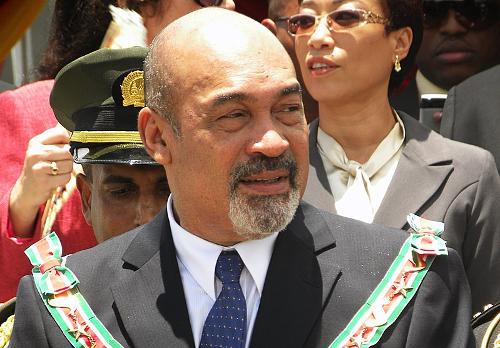 Bouterse in 2010, SurinamePhoto: Pieter van Maele CC 3.0 Unported no changes made
Bouterse in 2010, SurinamePhoto: Pieter van Maele CC 3.0 Unported no changes made
In August 2000, 64-year-old Ronald Venetiaan was elected the new president of Suriname. The leader of the Creole NPS, part of the four-party block New Front, received 37 of the 51 votes in the Surinamese parliament and thus obtained the necessary two-thirds majority. With the election of Venetian, the reign of Jules Wijdenbosch came to an end.
Venetiaan made the reorganization of the dying economy one of his most important spearheads. He also wanted to restore the confidence of the Surinamese population in politics, which was characterized by corruption, self-enrichment and drug interests. The improvement of the relationship with the Netherlands was also on his program. In the elections held on May 25, 2005, the New Front's government coalition will be reduced from 33 to 23 seats in Parliament. The winner is Bouterse's NDP, which gains eight seats, bringing it to a total of 15 seats. The VVV van Wijdenbosch gets five seats. Three interior parties, which have united in the A-Combination led by Ronnie Brunswijk, win five seats, one of which is for the Brunswijk party. The Alternative-1 led by Winston Jessurun will get three seats. On June 30, 2005, the members of the National Assembly (DNA) were sworn in. Parliament chairman is Paul Somohardjo, leader of the Javanese party Pertjaja Luhur, which is part of the New Front.
The United People's Assembly (the parliament expanded with district and resort councils to approximately 900 persons) has elected Ronald Venetiaan and Ramdien Sardjoe as president and vice-president.
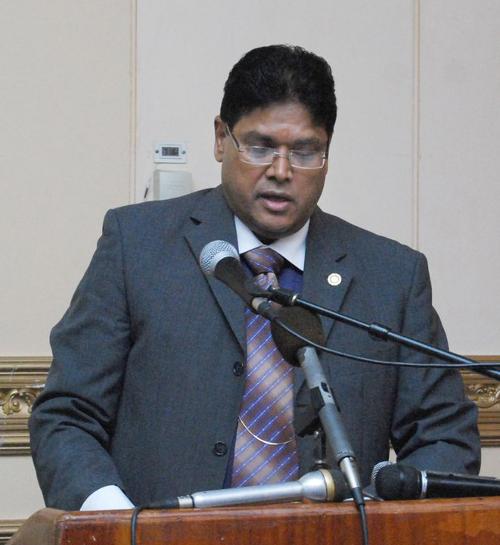 Shan Santoki, SurinamePhoto: Master9sword1 in the public domain
Shan Santoki, SurinamePhoto: Master9sword1 in the public domain
In September 2007, a UN tribunal settled a conflict over an oil-rich section off the coast between Guyana and Suriname. Both countries will receive a share. In July 2008 the trial against Desi Bouterse starts. In October 2008, mining giant Billiton announced that it would stop operating in 2010 after a falling out with the government. In May 2010 the mega combination of Bouterse won the elections. In July 2010 Bouterse is elected president with the support of two former enemies. He will take office in August. The Dutch Minister of Foreign Affairs Verhagen says that Bouterse is only welcome in the Netherlands to serve his sentence. The Surinamese parliament passed the amnesty law in April 2012, so that the suspects of the 1982 December murders go free. In response to this, the Netherlands recalls its ambassador and stops payments to Suriname. In 2013 there will be a slight improvement in the relationship between Suriname and the Netherlands. Ernst Noorman has been appointed by Minister Frans Timmermans as charge d'affaires with the aim of normalizing relations as much as possible. In January 2014 Timmermans met his Surinamese counterpart Lackin, which is the first contact at this level in two years. They agree to meet again later this year. In May 2015, De NDP van Bouterse obtained the absolute majority in the parliamentary elections and can thus govern without coalition partners. In December 2015, the Court of Justice ruled that the trial of President Desi Bouterse for the murders of 15 political opponents in 1982 must be resumed despite an amnesty law. In May 2016, Bouterse prevents authorities from re-indicting him for the 1982 murders by invoking article 148 of the constitution that allows the president to stop the proceedings in the interests of state security. A new Dutch ambassador was due to take office in July 2017, but he is not welcome. In the May 2020 elections, Bouterse's NDP loses significantly and a coalition government led by Chan Santokhi takes office in July, with Ronnie Brunswijk as vice-president.
Sources
Beatty, N.B. / Suriname
Chelsea House
Encarta Encyclopedie
Leuwsha, T / Reishandboek Suriname
Elmar,
Noordegraaf, W / Suriname
ANWB
CIA - World Factbook
BBC - Country Profiles
Copyright: Team The World of Info